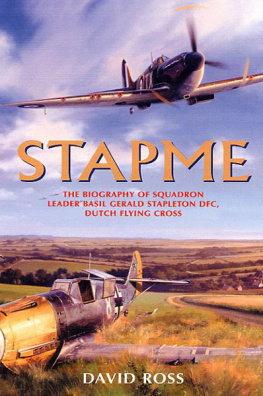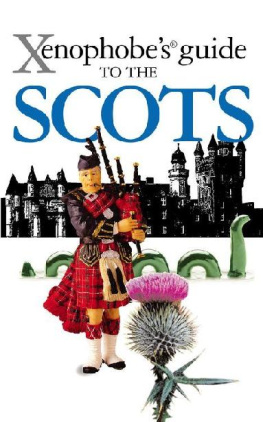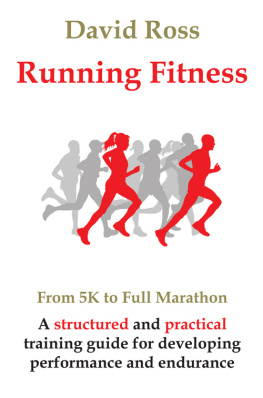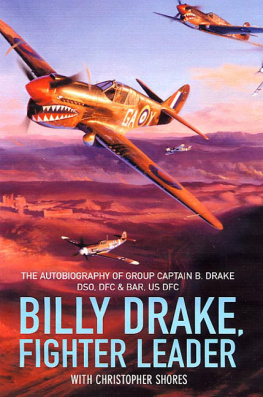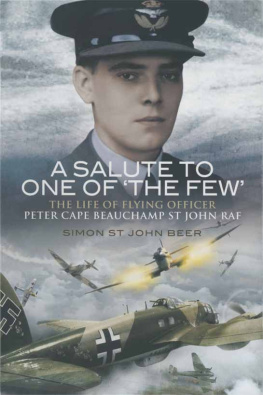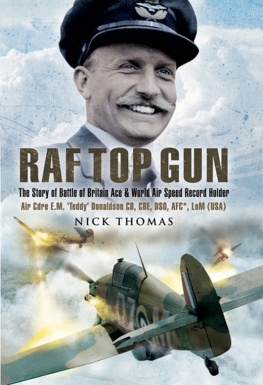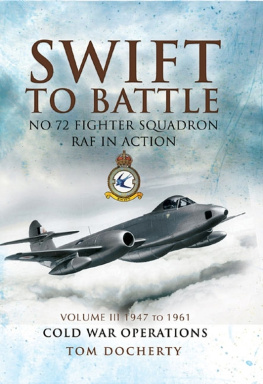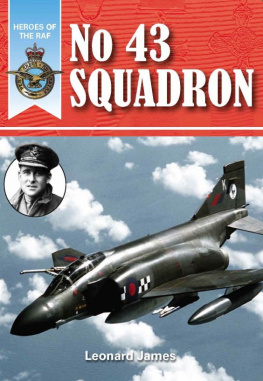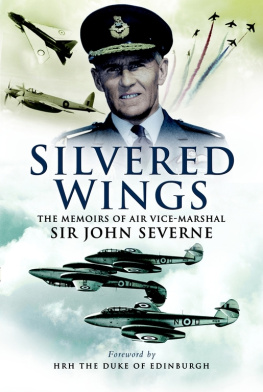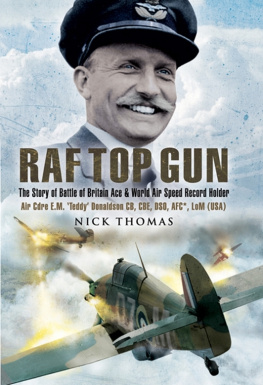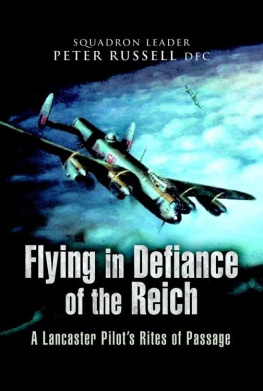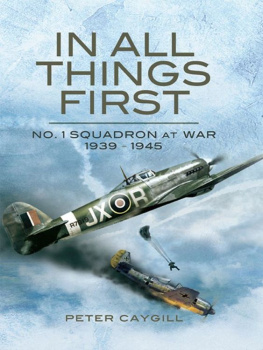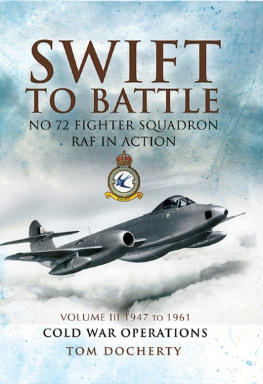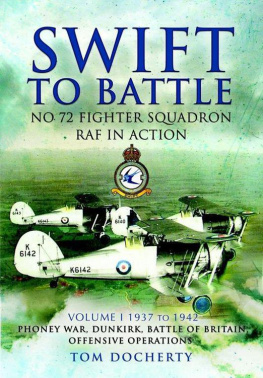
Published by
Grub Street
4 Rainham Close
London SW11 6SS
Copyright 2002 Grub Street, London
Text copyright 2002 David M. S. Ross
Reprinted 2007
British Library Cataloguing in Publication Data
Ross, David
Stapme: the biography of Squadron Leader Basil Gerald
Stapleton, DFC, Dutch Flying Cross
1. Stapleton, Basil Gerald 2. World War, 1939-1945 Aerial
operations, South African 3. World War, 1939-1945 personal
narratives, South African 4. Fighter pilots South Africa Biography
I. Title
940.544968092
ISBN 1 902304 98 5
PRINT ISBN: 9781902304984
EPUB ISBN: 9781909166691
All rights reserved. No part of this publication may be reproduced,
stored in a retrieval system, or transmitted in any form or by any
means, electronic, mechanical, photocopying, recording, or otherwise,
without the prior permission of the copyright owner.
Typeset by Pearl Graphics, Hemel Hempstead
Printed and bound in Great Britain by
MPG Ltd, Bodmin, Cornwall
Grub Street Publishing only uses
FSC (Forest Stewardship Council) paper for its books.
FOREWORD
There are a number of privileges inherent in being a member of the Battle of Britain Memorial Flight, some obvious, such as the opportunity to fly two of the worlds most famous fighters and, in the role of Commanding Officer, the opportunity to act as custodian of a large part of the nations flying heritage. Among the less obvious privileges is the opportunity to meet those heroes, acknowledged or unsung, who fought WWII in the Royal Air Force and survived, unscathed or otherwise. It is largely thanks to the generosity of the 48th Tactical Fighter Wing of the United States Air Force that I have been able to meet men of the calibre of Gerald Stapleton, either as guests of the A10 Squadrons at RAF Alconbury or latterly of the F15 Squadrons at Lakenheath.
As comrades-in-arms those American airmen acknowledge our debt to Gerald Stapleton and his ilk despite the fact that to hear Stapme and his colleagues talk one might imagine no debt was due. It is almost as if WWII was an inconvenience, but worth getting into as the only fight available. Perhaps understandable with the benefit of years of training and hard experience, but we should remember Gerald Stapletons entry to the fray was backed up by a magnificent 62 hours dual flying and 105 hours solo. Those hours consisted of a motley collection of types including Tiger Moths and Ansons, none of which could be deemed particularly representative of the Hurricanes and Spitfires he was to fly in combat, nor did that training include much in the way of combat skills such as air-to-air gunnery or formation tactics. By comparison, I entered the peacetime frontline in the early 1960s after 250 hours of training, all of it relevant and most of it on aircraft of representative performance. Todays fighter pilot takes at least six years from joining to get to the frontline, enough to miss an entire World War!
Last month the funeral of Her Majesty Queen Elizabeth the Queen Mother was seen as the passing of an era by the majority of the populace; I believe Gerald Stapleton and his surviving comrades represent the last of the talented amateurs whose dedication and resolve forged them into Britains most vital shield and the instruments of ultimate victory.
Enjoy the book remember the debt.
Squadron Leader Paul Day OBE, AFC, RAF
Officer Commanding
Battle of Britain Memorial Flight
RAF Coningsby
May 2002
PROLOGUE
During research into the life of Flight Lieutenant Richard Hillary and the history of 603 (City of Edinburgh) Squadron, RAuxAF, I learned much about those with whom Hillary had served during the Battle of Britain. During that period of the Squadrons history there were many abiding characters immortalised in Hillarys The Last Enemy. One who was initially quite elusive was Squadron Leader Basil Gerald Stapme Stapleton DFC, DFC (Dutch).
Stapme is one of 2,918 Fighter Command aircrew who fought in the Battle of Britain. Of that number, 544 were killed during the battle (10 July 31 October 1940) with a further 796 killed in the course of their duties between 1 November 1940 and 15 August 1945 bringing the total to 1,340. Over the years, time has naturally taken its toll and of the 1,578 survivors, the Few are indeed getting fewer. Stapme survived to see peace and was, by his own admission, fortunate to have lived the many years which most of his young colleagues had been denied.
A survivor and an ace of the Battle of Britain, Stapme moved to a Delivery Flight, then to a Merchant Ship Fighter Unit, where he faced the prospect of being launched by rockets off the deck of a merchant rust-bucket in defence of the trans-Atlantic convoys. Next he saw service with 257 (Burma) Squadron before, once again, moving to a Delivery Flight. In 1944, having spent a lengthy period as a gunnery instructor, a job he relished, he took over command of 247 (China-British) Squadron in France. Once again he saw a large number of colleagues killed in action before he was forced to land behind enemy lines and spend the remainder of hostilities as a POW.
Following the end of WWII and on completion of his Short Service Commission, Stapme did not remain in the RAF. He believed he had no future in the force in peacetime. His various jobs will come as a surprise to many and his adventures have left him quietly content with a host of vivid memories.
Having initially made contact with Stapme while he was still living in South Africa, I received a telephone call shortly after he returned to live in England and in his instantly recognisable voice, only slightly tinged with a South African accent, he said: Stapleton here. So you want to know more about Richard Hillary? Come on over and well have a beer. On meeting him I soon realised that his was a story in itself and one which was worth telling; a conclusion I have arrived at with many of the 603 Squadron fighter pilots.
To many, the image of Stapme Stapleton with his large handlebar moustache epitomises the publics perception of what a typical Battle of Britain fighter pilot looks like. The development of this association, albeit an inaccurate one, was nevertheless evocative of the times and due mainly to Stapmes likeness to the wartime caricature of Flying Officer Kyte.
Interestingly, the reason why Stapme and a number of the other younger members of 603 Squadron attempted to grow moustaches was so that they appeared older than they actually were because in their opinion the senior pilots in the Squadron exuded know-how and credibility. Some of those older members had first joined the RAF or AAF as far back as 1931-32 and with war looming the newcomers were keen to be perceived as as experienced as the old hands. In truth, whilst the youngsters looked to their elders for role models, when war came they all shared a natural but common shortfall a lack of combat experience. When 603 Squadron were sent to relieve one of 11 Groups beleaguered squadrons during the Battle of Britain, Stapme and his contemporaries underwent a shocking baptism as frontline Fighter Command pilots. As eager young men, they bonded quickly, but conditions also required them to learn rapidly as fighter pilots and as a fighting unit. During their initial patrols they attempted to pick up the skills required in order just to survive, before progressing to shooting down an enemy aircraft, if they were lucky. Some lasted a matter of hours whilst others rode their luck and survived the battle only to be killed later in the war.
In this book I hope you will enjoy reading of Stapmes early life, his wartime experiences, and post-war years when the story unfolds of his time spent living in far-off places. With two failed marriages behind him it was during a period of heavy drinking that he met his present wife, Audrey, who quite possibly saved him from an insalubrious future and even an early death. Some years later, Stapmes eldest son, Mike, who has contributed to the story, declared himself an alcoholic. Whilst Stapme had Audrey to help get his life back on course, Mike fought his own battle and has now been free of the habit for a great many years. He is justifiably proud of this, particularly as he is an experienced club/hotel manager and temptation is never far away. Stapme and Mike describe the years spent living and working in Botswana as the happiest of their lives and recall Botswana as being Gods own country. Sadly, fate ultimately sought out the Stapleton family when Stapmes youngest son, Harvey, died following a motocross accident. Stapmes life came full-circle when he returned to England where he and Audrey now live their days in quiet retirement in the part of Lincolnshire from where his family originated.
Next page
